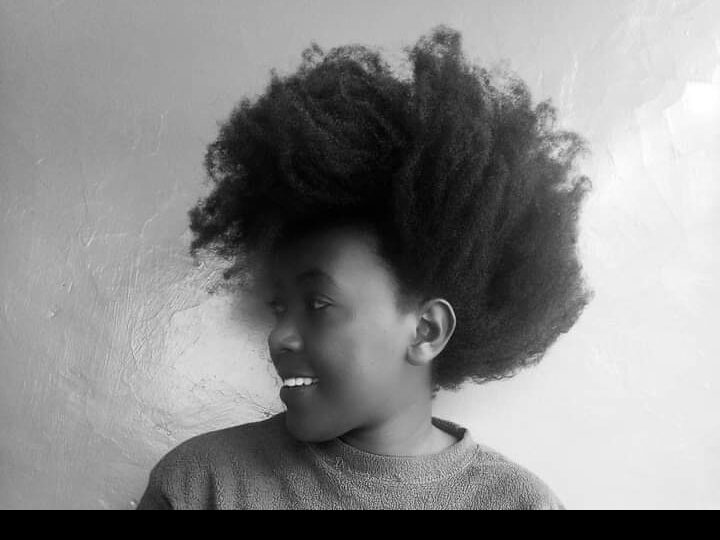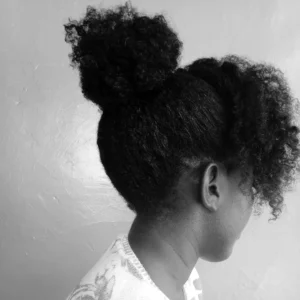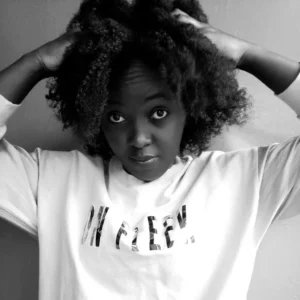Hey Curlfriends! Let’s talk about something that everyone with natural hair has probably dealt with at some point: scalp buildup. Whether you’re a newbie on your natural hair journey or a seasoned pro, scalp buildup can be a frustrating problem that hinders hair growth and leaves your scalp feeling clogged and itchy. But don’t worry—if you’ve been struggling with scalp buildup, you’re not alone, and I’ve got you covered!
In this blog post, we’ll dive deep into the major causes of scalp buildup, how to recognize it, prevent it, and most importantly, how to treat it. So grab your tea, coffee, or water, and let’s get into it!
Feel like your hair has been the same length forever, I’ve an Ebook that will help you grow your hair healthier, longer and thicker. Grab your copy here… Also, check out all the Ebooks,guides and journals that will go a long way in your hair care journey here.
Table of Contents
Scalp Buildup Explained: Top 6 Causes you Should Know
What Is Scalp Buildup?
Scalp buildup occurs when a combination of oils, dead skin cells, sweat, product residue, and environmental debris accumulates on the scalp. This buildup can block your hair follicles, potentially leading to dandruff, irritation, and even hair loss if not treated properly. If you notice that your scalp feels greasy or that you’re dealing with a lot of flakes, scalp buildup could be the culprit.
Understanding the causes is the first step to dealing with scalp buildup, so let’s break down the major culprits.

Major Causes of Scalp Buildup
1. Product Overload
One of the most common causes of scalp buildup is overusing hair products. We tend to love layering our products—gels, creams, oils, leave-ins, and conditioners. While these products can be fantastic for maintaining moisture and definition, they can also leave behind residue if they’re not thoroughly washed out.
Common Products That Lead to Buildup:
- Heavy oils like Jamaican Black Castor Oil
- Creamy leave-in conditioners
- Styling gels and curl creams
- Silicones (found in some conditioners and styling products)
How It Happens:
Over time, product residue can cling to your scalp and hair strands, leading to a greasy, weighed-down feeling. This is especially true for products containing silicones and heavy oils, which can create a film on your scalp, making it harder for moisture and nutrients to penetrate.
How to Prevent It:
- Clarify Regularly: Use a clarifying shampoo or apple cider vinegar (ACV) rinse at least once a month to remove product buildup.
- Be Mindful of Ingredients: Try to avoid products with silicones and sulfates, which can contribute to long-term buildup.
- Use Lightweight Products: Opt for lightweight leave-ins and oils if you find that heavy products tend to stick around.
2. Infrequent Washing
Let’s be honest—sometimes we can go a little too long without washing our hair, especially when we’re rocking a protective style or trying to stretch our wash days. While it’s tempting to extend wash day to avoid the hassle of detangling, infrequent washing can contribute to scalp buildup.
How It Happens:
Natural hair produces natural oils (sebum), which can accumulate over time. When you don’t wash your hair frequently enough, those oils mix with sweat, dirt, and product residue, creating the perfect environment for buildup to occur.
How to Prevent It:
- Stick to a Wash Routine: Aim to wash your hair every 7-10 days (or every two weeks at most) to keep your scalp clean and refreshed.
- Use Sulfate-Free Shampoos: Opt for gentle, sulfate-free shampoos that cleanse without stripping your hair of its natural oils.
3. Sweat and Exercise
Yes, you heard me right! That killer workout session might be great for your body, but sweat can also lead to scalp buildup. When you sweat, your scalp produces excess oil, which mixes with dead skin cells and product residue, leading to buildup.
How It Happens:
When sweat isn’t washed away, it can cause your hair and scalp to feel greasy, and over time, this can lead to clogged pores and hair follicles. For natural hair, this can be especially challenging because we tend to wash our hair less frequently than those with straighter textures.
How to Prevent It:
- Rinse After Workouts: If you’re not ready to fully wash your hair after a workout, try rinsing your scalp with water or using a gentle co-wash to remove sweat and excess oil.
- Dry Shampoo: Use a natural dry shampoo to absorb excess oil between washes.
4. Hard Water
Believe it or not, the water you use to wash your hair could be contributing to your scalp buildup. Hard water contains high levels of minerals like calcium and magnesium, which can leave behind a residue on both your hair and scalp.
How It Happens:
When hard water minerals mix with your shampoos and conditioners, they can create a film that is difficult to rinse out, leading to scalp buildup over time. This can also make your hair feel dry and brittle.
How to Prevent It:
- Install a Water Filter: Consider installing a showerhead filter to reduce the mineral content in your water.
- Use a Chelating Shampoo: Chelating shampoos are designed to remove mineral buildup from hard water. You can use them once a month to clarify your hair and scalp.
5. Dead Skin Cells
Just like the skin on your face and body, your scalp sheds dead skin cells. When these dead skin cells accumulate, they can mix with oil and product residue, leading to buildup.
How It Happens:
If you don’t regularly cleanse and exfoliate your scalp, dead skin cells can create flakes, irritation, and eventually clog your hair follicles.
How to Prevent It:
- Scalp Exfoliation: Incorporate scalp exfoliation into your routine using a a scalp massager to lift away dead skin cells.
- Clarifying Shampoos: These are essential for clearing away any debris and dead skin cells, ensuring your scalp stays fresh and healthy.
6. Seborrheic Dermatitis
Seborrheic dermatitis is a scalp condition that leads to excessive oil production and dandruff-like flakes. If you notice persistent flakes, itching, and redness, it could be due to seborrheic dermatitis, which can cause a different type of buildup.
How It Happens:
This condition causes your scalp to produce too much oil (sebum), which leads to greasy buildup and visible flakes. It’s often mistaken for dandruff but can be more stubborn to treat.
How to Prevent It:
- Medicated Shampoos: Look for shampoos that contain ingredients like ketoconazole or selenium sulfide to treat seborrheic dermatitis.
- Consult a Dermatologist: If you suspect you have seborrheic dermatitis, it’s best to consult a dermatologist for a proper diagnosis and treatment plan.
How to Fix Scalp Buildup
Now that we know the causes, let’s talk about how to fix scalp buildup. Here are some tried-and-true methods:
1. Clarifying Shampoo
Clarifying shampoos are specifically designed to deep-clean your scalp and remove excess oil, product residue, and dead skin cells. Use them once a month (or as needed) to give your scalp a fresh start.
Recommended Products:
2. Apple Cider Vinegar (ACV) Rinse
ACV is a fantastic natural remedy for removing buildup. It helps to balance the pH of your scalp and leaves your hair feeling clean and refreshed.
How to Use:
- Mix 1 part ACV with 3 parts water.
- Pour the mixture over your scalp after shampooing, let it sit for 5-10 minutes, then rinse thoroughly.
3. Scalp Massages
Regular scalp massages help stimulate blood flow, encouraging healthy hair growth and breaking up buildup.
Scalp buildup can be frustrating, but with the right care, it’s totally manageable! Remember to stay consistent with your wash routine, clarify your scalp when needed, and choose products that are lightweight and moisturizing. Whether it’s from product overload, sweat, or even hard water, the key is understanding the root causes and giving your scalp the love it deserves.
What’s your go-to remedy for scalp buildup? Let me know in the comments, and let’s keep our scalps fresh and flake-free together!


